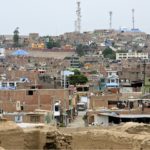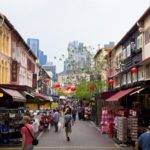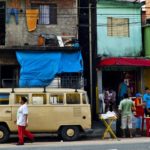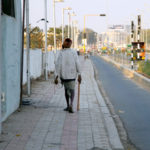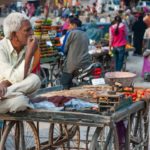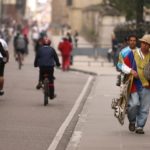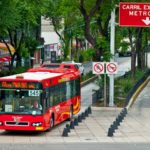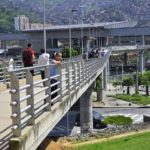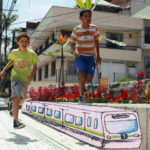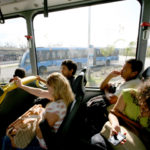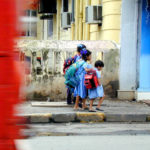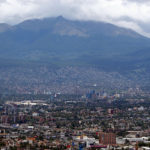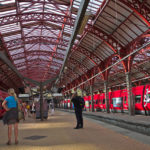Recent Posts by Robin
Although Lima’s Villa El Salvador neighborhood was just a dusty plain called the Tablada de Lurín in 1971, it would soon become home to some of the city’s poorest residents. At the time, there were no electricity lines, no wells, ...

Where would you feel safer walking alone at 3 A.M: a busy, heavily trafficked street, or a loosely populated section of a sprawling city? Most people would likely choose the former. Indeed, higher population densities can make city streets feel ...

Consensus is building around the many benefits of compact cities. Overall, compact cities use fewer resources, produce fewer carbon emissions, and provide better quality of life for their inhabitants than their sprawled counterparts. In rapidly urbanizing countries in the global ...

Developing countries are projected to gain 2.2 billion new urban residents between now and 2050. Governments and city leaders have a choice: they can develop cities that are sprawled and auto-dependent, or they can develop cities that are connected, compact, ...

As previously discussed on TheCityFix, many cities worldwide are facing a series of challenges around informal economic activity. As they begin to modernize and transform public spaces, street vendors are often left behind or swept away. Yet, these efforts at ...

There is an entire ecosystem of informal commerce along Bogotá, Colombia’s streets. Some vendors sit at traffic signals or bus stops, waiting for a bus that’s not too full and not too empty. When they spot a good candidate, they ...

The “People-oriented Cities” series – exclusive to TheCityFix and WRI Insights – is an exploration of how cities can grow to become more sustainable and livable through transit-oriented development (TOD). The nine-part series will address different urban design techniques and trends ...

Over 22,000 attendees gathered in Medellín, Colombia for the Seventh World Urban Forum (WUF7) from April 5 – 11, 2014, sharing ideas, experiences, and challenges for creating more sustainable and equitable cities. The conclusion of the WUF7 saw the release ...

As cities in the developing world continue to grow, so do their traffic safety concerns. Latin America, for instance, now sees three times as many deaths from traffic crashes as Europe, the vast majority of which occur in cities. Vulnerable ...

Around the world, cities are searching for sustainable ways to transport residents quickly, efficiently, and safely throughout their streets. One such solution is bus rapid transit (BRT), which is already widely implemented in both the developed and developing worlds. New ...

Today is the United Nations’ World Habitat Day – a day established to reflect on the state of our cities and towns, and remind us of our shared responsibility for their stewardship. On this day, UN-HABITAT is releasing the ...

In order for a system to be truly accessible, it must be accessible at all links in the transport chain. Photo by EMBARQ. Ten percent of the world’s population has a disability. That’s 650 million people, 80% of whom live ...

In Guy Montag’s city, it is illegal to be a pedestrian. The main character in Ray Bradbury’s 1953 dystopian American classic, Fahrenheit 451, commutes by subway. He thinks little of the circumstances and of the culture which gave rise to ...

Nestled within Mexico City and home to approximately 1.2 million residents, Ciudad Neza has grown into one of Latin America’s largest slums. Salvador Herrera, Deputy Director of EMBARQ Mexico, remembers a time when Mexico City led the world in the ...

Urbanization offers a tremendous opportunity to support a growing global population efficiently and humanely. Developing countries alone are expected to build more new city-area during the two decades leading up to 2030 than all of humanity has built throughout history ...

 Phil
Great article! A lot of what I have read here, has already been implemented in cities in the Netherlands, with Denmark the two bicycle countries par...
Phil
Great article! A lot of what I have read here, has already been implemented in cities in the Netherlands, with Denmark the two bicycle countries par...
 Bobby Salvin
I understand why some people wish mobility and GDP weren't connected, but it's wishful thinking. During the pandemic, for instance, when the economy...
Bobby Salvin
I understand why some people wish mobility and GDP weren't connected, but it's wishful thinking. During the pandemic, for instance, when the economy...
 Peace
Let me understand your Position -
We need to make our streets and public spaces dangerous and inhospitable so the disabled and infirm are forced to...
Peace
Let me understand your Position -
We need to make our streets and public spaces dangerous and inhospitable so the disabled and infirm are forced to...




